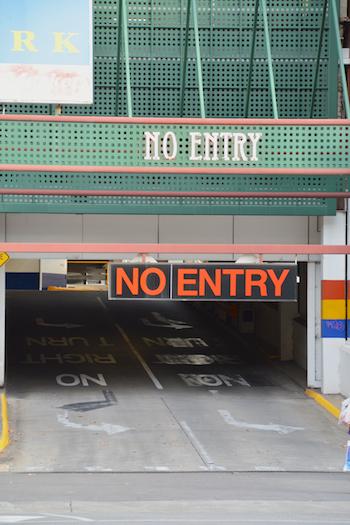Where should we park?
Duration/age

Next time you are out and about shopping with your child ask them to help you look for a spot to park the car. Will you try and find a spot in the car park or look for a park out on the street?
Talk to your child about how long you will be at the shops. Are there time restrictions that change where you park and how long you’ll stay?
We’re going to see a movie and have lunch. We will be at the shopping centre for more than 2 hours so we have to find an all-day park.
On the way there talk to your child about the different types of car parks. Is it an underground park or a multistory park with several floors? Will you need to get a ticket before you go in or can you park for free?
Talk about how you know what to do when you drive into the car park. Are there signs that tell you which direction to drive, how fast to go and where to park?
We have to drive on the left-hand side of the road. The cars coming from the other direction are on the right-hand side of the road.
The sign says the speed limit is 5 km. That is very slow.
Once you find a park talk about how big it is compared to the car. Is your car small or big? Can you drive straight into the parking space? Or will you need to reverse your car in?
Our car is only little and there is lots of room to park. We can drive straight in.
Materials you will need
- Car
- Car park
Alternative tools
- Road
Skills this activity improves
Why does this matter?
Talking to your child as you look for a car park helps them to learn about measurement and follow directions. They will begin to explore how words and language can be displayed as signs and symbols.
As you drive around the car park your child will hear you talk about different forms of measurement. They will be exploring number, speed, time, distance and size.
Talk to your child about the different signs that you see and explain that the signs give you information and help you to know what to do. Explain that the signs are made up of numbers, symbols, pictures and letters that give the same message to all drivers. This helps the driver to follow directions and drive safely.
When you look for a park you will be using the language of position and direction. When your child hears you talk about where you will park or what direction you are driving they will begin to understand that language tells us what to do and where to go.
What does this lead to?
When you look closely at signs with your child, they will notice the different colours, shapes, images and how the image is placed on the sign. This helps them develop an understanding that pictures and symbols can tell a story.
By noticing the signs they begin to identify patterns as symbols and notice where a sign might be repeated. Understanding about signs, symbols and patterns helps your child to predict what might happen.
‘Signs with bikes on them give us information about riding a bike. A sign with a railway line tells us there is a train line.’
Talking while looking for a car park helps children to develop listening skills. It will help them to listen for information that tells them what to do and where to go.
As you look for a park they will begin to understand that measurement can be described using different words. They will learn that this gives us information that can tell us what to do.
Language to use
- Speed, time, space, size
- Sign
- Car, car park, high-rise, basement, floors
- 1st floor, 2nd floor, 3rd floor
- Lift, stairs, ramp
- Direction, position, forward, back, turn, straight, reverse
- Left, right
- Time limit, speed limit
Questions to use
- Can you see a parking spot?
- Is our car big or small?
- Will we fit?
- How fast can we drive?
Useful tips
- You might also like to take a look at the activities We're off and racing and Reading a map.
- Remember to talk to your child in your home language.
More ideas
Take photos of the signs to make a bingo card for next time.
Variation by age
Three to five year olds
- Make your own car park from blocks at home.
- Borrow storybooks from the library about cars and buildings.
- Have a number hunt. How many different numbers can you find in the car park?
Language to use
- Number
- Sign
- Car, car park, high-rise, basement, floors
- Direction, position, forward, back, turn, straight, reverse
- Left, right
- Time limit, speed limit


